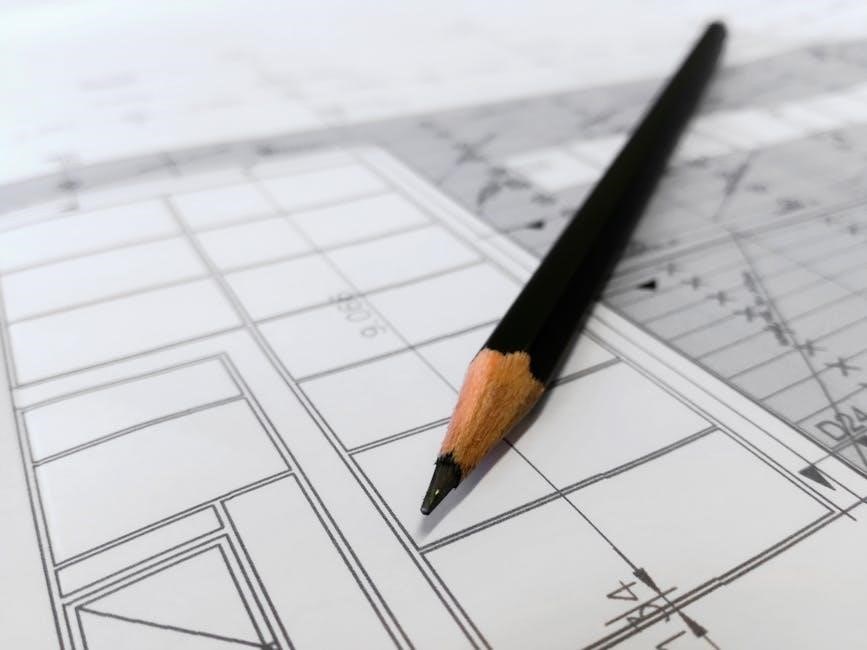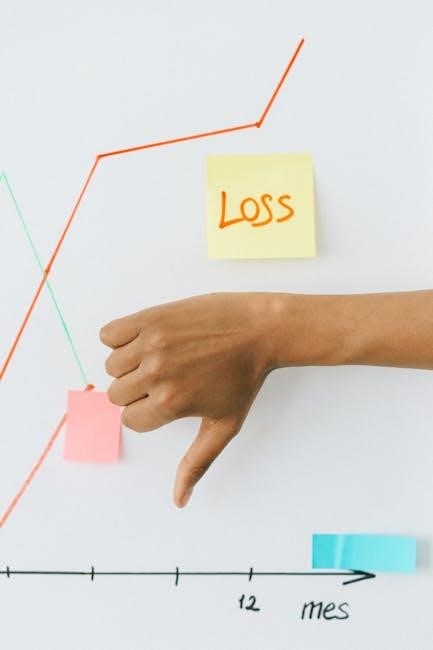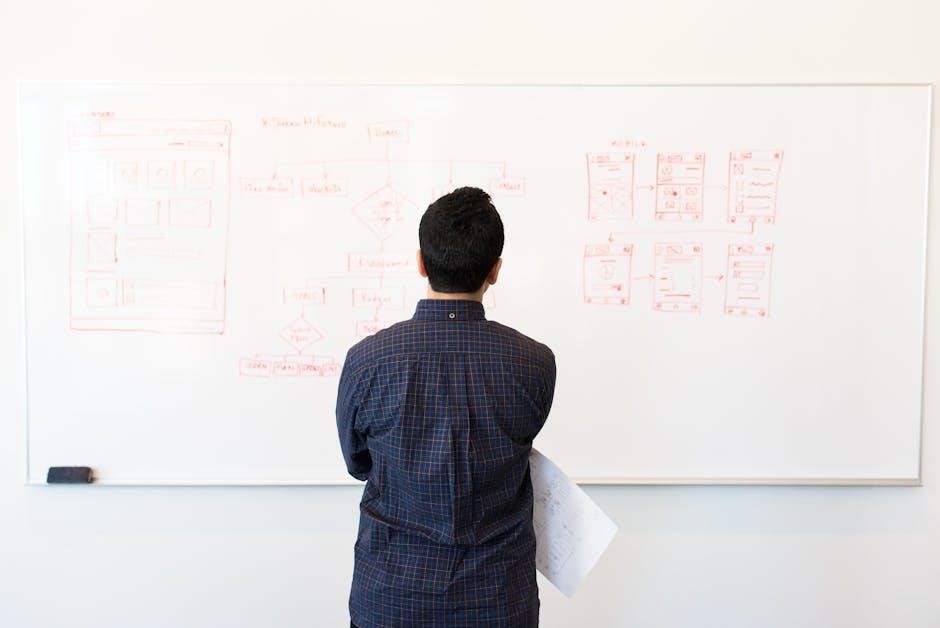A well-structured volleyball tryout plan is essential for evaluating athletes’ skills, physical conditioning, and teamwork abilities. It ensures fairness, organization, and clarity for both players and coaches.
1.1 Overview of the Volleyball Tryout Process
Volleyball tryouts are a structured process designed to evaluate players’ skills, physical conditioning, and teamwork abilities. The process typically begins with registration and warm-up exercises, followed by skill assessments such as passing, setting, hitting, and serving. Coaches observe players during drills and scrimmages to determine their strengths and versatility. The tryout also includes agility tests and game-like scenarios to gauge players’ readiness for competitive play. Clear communication and organization are key to ensuring a fair and efficient evaluation. The goal is to identify athletes who can contribute effectively to the team while fostering a positive and competitive environment. This process helps coaches form a well-rounded squad for the upcoming season.
1.2 Importance of a Well-Structured Tryout Plan
A well-structured tryout plan ensures fairness, organization, and efficiency in evaluating athletes. It allows coaches to assess skills, physical fitness, and teamwork accurately. A clear plan helps identify top talent, builds player confidence, and sets realistic expectations. It also promotes a positive atmosphere, encouraging players to showcase their abilities without unnecessary pressure. By outlining specific drills and criteria, a structured plan minimizes bias and ensures every athlete receives equal opportunities. This approach not only helps in forming a balanced team but also prepares players mentally and physically for the challenges ahead, fostering a sense of readiness for the upcoming season.

Preparing for Volleyball Tryouts
Preparing for volleyball tryouts involves rigorous physical conditioning, skill-specific drills, and mental strategies. Consistent practice and a well-rounded approach ensure peak performance during evaluations.
2.1 Physical Conditioning and Warm-Up Routines
Physical conditioning is crucial for volleyball tryouts, focusing on endurance, strength, and agility. Incorporate exercises like sprints, burpees, and core workouts to build stamina. Warm-up routines should include dynamic stretching, such as leg swings and arm circles, to improve flexibility and prevent injuries. Light cardio, like jogging or jumping jacks, prepares the body for intense activity. A well-structured warm-up enhances muscle activation, ensuring athletes are ready to perform at their best during drills and assessments. Consistency in conditioning and proper warm-up techniques significantly impact overall performance and reduce the risk of injury during tryouts.
2.2 Skill-Specific Drills for Tryouts
Skill-specific drills are vital for showcasing abilities during volleyball tryouts. Passing drills, such as repeated forearm passes and partner passing, improve accuracy and consistency. Setting exercises, like rapid-fire sets and footwork drills, enhance control and precision. Hitting drills focus on timing, power, and placement, while serving practice emphasizes accuracy and variety. Defensive drills, including dig and block exercises, assess reaction time and technique. These targeted drills allow coaches to evaluate each player’s technical skills and adaptability, ensuring a comprehensive assessment of their volleyball proficiency and potential to contribute to the team.

2.3 Mental Preparation and Confidence Building
Mental preparation is crucial for volleyball tryouts, as it builds confidence and resilience. Techniques like visualization, positive affirmations, and mindfulness can help athletes stay focused and composed under pressure. Breathing exercises and pre-game rituals can reduce anxiety and improve concentration. Coaches often emphasize the importance of a growth mindset, encouraging players to embrace challenges and learn from mistakes. Building self-belief through practice and constructive feedback fosters a positive attitude, which is essential for standout performances. By cultivating mental strength, athletes can approach tryouts with confidence, showcasing their abilities effectively and increasing their chances of success.
Key Components of a Volleyball Tryout Plan
A successful volleyball tryout plan includes dynamic warm-ups, skill assessments, and physical conditioning, ensuring a structured and organized evaluation of each player’s abilities.
3.1 Dynamic Warm-Up and Stretching Exercises
A dynamic warm-up is crucial for preparing athletes for volleyball tryouts. It involves active movements like high knees, arm circles, and leg swings to increase blood flow and flexibility. Stretching exercises, such as hamstring and shoulder stretches, help prevent injuries and improve range of motion. These routines simulate volleyball actions, ensuring players are ready for drills. Incorporating sport-specific stretches, like butterfly stretches for flexibility, enhances performance. A proper warm-up not only reduces injury risk but also prepares the body for explosive movements, such as jumping and sprinting. Coaches often emphasize the importance of a structured warm-up to assess agility and readiness. This foundational step sets the tone for a successful tryout.
3.2 Agility and Speed Drills
Agility and speed drills are vital for assessing a player’s quickness and coordination. These exercises, such as cone drills, ladder exercises, and shuttle runs, mimic the fast-paced movements in volleyball. The T-drill and straight-line sprints evaluate acceleration and directional changes, essential for positions like hitters and liberos. Proper execution of these drills highlights a player’s ability to rapidly respond to plays, ensuring they can cover the court effectively. Incorporating these drills into tryouts helps coaches identify athletes with the agility and speed needed for competitive play, making them invaluable for team selection and strategy development. They directly impact a player’s readiness for game scenarios, ensuring optimal performance during matches.
3.3 Skill Assessment (Passing, Setting, Hitting, Serving)


Skill assessment is a cornerstone of volleyball tryouts, focusing on core abilities like passing, setting, hitting, and serving. Passing accuracy and technique are evaluated through controlled drills, where players demonstrate consistent forearm and overhead passes. Setting skills are tested for precision and ball placement, ensuring the ball is delivered to the optimal hitting position. Hitters are assessed on power, timing, and ability to adapt to various sets. Serving is evaluated for consistency, accuracy, and the ability to apply pressure on opponents. These assessments provide a comprehensive view of each player’s technical proficiency and their potential to contribute effectively to the team’s success.

Strategies for a Successful Tryout

Strategies for a successful tryout include understanding coach expectations, showcasing versatility, and excelling in communication and teamwork. These approaches enhance performance and leave a lasting impression.
4.1 Understanding the Coach’s Expectations

Understanding the coach’s expectations is crucial for a successful tryout. Coaches often look for athletes who can adapt to their system and demonstrate specific skills. Researching the coach’s style, such as offensive strategies or defensive priorities, helps tailor preparation. Players should focus on showcasing abilities aligned with these expectations, whether it’s precise passing, powerful hitting, or reliable serving. Additionally, understanding the team’s dynamics and the coach’s communication style can help athletes stand out. By aligning personal strengths with the coach’s vision, players increase their chances of making a positive impression and securing a spot on the team.

4.2 Demonstrating Versatility in Positions
Demonstrating versatility in positions is a key factor in standing out during tryouts. Coaches value players who can adapt to multiple roles, as it enhances team flexibility. Versatility shows a player’s ability to learn and adapt, which is crucial in dynamic game situations. Athletes should be prepared to showcase skills beyond their primary position, such as a setter who can also defend or a hitter who can serve effectively. Practicing various positions beforehand ensures confidence and readiness. Highlighting this adaptability not only expands a player’s utility but also demonstrates a willingness to contribute to the team’s success in any capacity. This trait is highly regarded by coaches.
4.3 Communication and Teamwork During Drills
Effective communication and teamwork are critical during volleyball tryouts. Coaches evaluate how players collaborate, as strong teamwork translates to game success. Clear verbal cues, like calling plays or signaling to teammates, demonstrate leadership and awareness. Non-verbal communication, such as hand signals or body language, also plays a role. Players should actively support each other, offering encouragement and working cohesively during drills. Coaches observe how well athletes adapt to team dynamics and contribute to a positive, unified environment. By showcasing these qualities, players highlight their ability to integrate seamlessly into the team and enhance overall performance. Strong communication and teamwork are essential for making a lasting impression.
Post-Tryout Evaluation and Feedback
After tryouts, coaches evaluate player performance, providing constructive feedback to highlight strengths and areas for improvement. This step is crucial for athlete development and team formation.
5.1 Reviewing Performance Metrics
Coaches analyze key performance metrics post-tryouts, assessing skills like passing, setting, and hitting accuracy. Speed, agility, and teamwork are also evaluated using drills and game scenarios. Coaches may use scorecards or video analysis to objectively measure each player’s abilities. This process ensures fairness and transparency, helping to identify strengths and areas needing improvement. Players receive detailed feedback, highlighting their execution of techniques and overall contribution to team dynamics. Metrics are compared against team needs to determine the best fits for roster spots. This thorough evaluation supports informed decisions, fostering a competitive yet supportive environment for athlete growth and team success.
5.2 Receiving Constructive Feedback from Coaches
Constructive feedback from coaches is crucial for athlete growth post-tryouts. Coaches provide specific insights into strengths and areas for improvement, fostering a transparent process. Players should actively listen, ask clarifying questions, and demonstrate a willingness to learn. This open communication builds trust and mutual respect. Feedback often includes actionable steps, such as refining techniques or enhancing physical conditioning. Athletes are encouraged to use this feedback as a roadmap for improvement, focusing on incremental progress. By embracing constructive criticism, players can address weaknesses and elevate their performance, contributing to both personal and team success. This collaborative approach ensures athletes are well-equipped to meet future challenges.
5.3 Next Steps After Tryouts
Following tryouts, athletes should review feedback from coaches and create a plan to address areas for improvement. Focus on refining specific skills, such as passing or serving, through targeted drills. Physical conditioning should continue to maintain and enhance endurance, strength, and agility. Communicating with coaches about goals and progress is essential for growth. Additionally, staying engaged with the team and practicing consistently ensures readiness for future opportunities. Setting both short- and long-term goals helps athletes stay motivated and focused on achieving their full potential. By taking proactive steps, players can build on their performance and prepare effectively for upcoming challenges. Dedication and perseverance are key to success.
A well-structured tryout plan, dedication, and continuous improvement are key to success. Embrace challenges, refine skills, and maintain resilience to achieve your volleyball goals with passion and determination.
6.1 Final Tips for Maximizing Tryout Potential
To maximize your tryout potential, focus on showcasing consistency and adaptability. Arrive early, listen attentively to coaches, and demonstrate a positive attitude. Highlight your versatility by being open to playing multiple positions and embrace feedback as an opportunity to grow. Stay hydrated, fuel your body with nutritious meals, and ensure adequate rest to perform at your best. Confidence is key, so maintain eye contact, communicate clearly, and let your passion for the sport shine through. Remember, hard work and resilience will leave a lasting impression on coaches, regardless of the outcome.
6.2 The Importance of Continuous Improvement

Continuous improvement is a cornerstone of athletic development, ensuring athletes remain competitive and adaptable. Even after tryouts, focusing on skill refinement, physical conditioning, and mental resilience is crucial. Seek feedback from coaches to identify areas for growth and set specific, achievable goals. Incorporate strength training, agility drills, and skill-specific exercises into your routine. Stay motivated by celebrating small victories and embracing challenges as opportunities to learn. Surround yourself with supportive teammates and mentors who encourage progress. Remember, improvement is a lifelong journey, and dedication to ongoing development will enhance both personal and team success in volleyball and beyond.